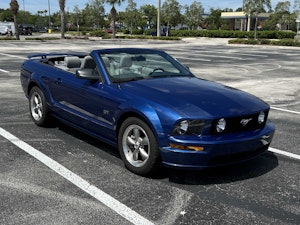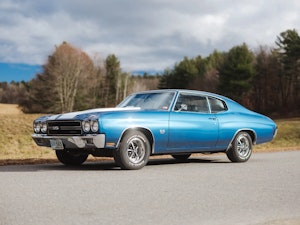Media | Articles
Happy 60th, Corvette
Last used to identify regular-production Corvettes in 1976, the “Stingray” label will again help define Chevrolet’s legendary two-seater when the long-running breed’s all-new C7 rendition goes on sale later this year.
“Stingray is one of the hallowed names in automotive history,” said GM global design vice president Ed Welburn during the C7’s celebrated introduction last month at Detroit’s North American International Auto Show. “We knew we couldn’t use [it] unless the new car truly lived up to the legacy.” No problem. With an estimated 450 horsepower, the 2014 Stingray will rank as the most powerful standard Corvette ever, not to mention the stingiest on gas, thanks in part to a long list of weight-saving components, including a new aluminum frame. All-time best braking and cornering are promised as well.
That Chevy officials opted to unveil their latest “best ’Vette yet” in January 2013 was only right considering the event coincided with the car’s 60th birthday. Know anyone who was there in New York in January 1953 when the first Corvette debuted, in concept car form, onstage at General Motors’ annual Motorama extravaganza? It’s probably even harder these days to find one of the “preferred” first-year buyers. Only 300 1953 Corvettes were built — all featuring white exteriors and red interiors — on a makeshift assembly line in Flint, Mich.
All also featured a Powerglide-backed “Stovebolt” six-cylinder beneath their forward-hinged fiberglass hoods, and this limiting combination, which remained in effect after production moved to St. Louis in 1954, almost killed off the Corvette before it had a real chance to roll. Chevy’s new-for-1955 small-block V-8 (and a three-speed manual transmission) surely helped save the day, as did the emergence of Zora Arkus-Duntov, the Corvette’s first chief engineer. A new, better-received body appeared in 1956, followed by optional fuel injection and an optional four-speed stick in 1957, and the hits just kept coming from there.
Some 1.5 million Corvettes later, Chevrolet’s proud legacy will, as the C7 name implies, evolve into its seventh generation this fall. The first, the so-called “solid-axle” run (consisting exclusively of convertibles) ended in 1962. Expressed in two words the first time around, the original Sting Ray debuted in 1963 along with a new coupe body and independent rear suspension. These second-generation Corvettes, built through 1967, are commonly called “mid-year” models today.
Marketplace
Buy and sell classics with confidence
Some enthusiasts call third-generation models “Sharks” in honor of the 1965 Mako Shark II showcar that predicted the Corvette’s 1968 restyle. Still the longest of the seven model runs, this generation remained on the market up through 1982, with Corvette production moving east from Missouri to its present location in Bowling Green, Ky., the previous year. Chevrolet officials then opted to skip the 1983 model designation due to delays encountered during development of the fourth-generation Corvette, which debuted as a 1984 model then retired in 1996.
The radically redesigned fifth generation was initially slated to make the scene in August 1992, just in time to help mark the Corvette’s 40th birthday. But stumbling blocks again took their toll, pushing the big date back to 1997. It was during this protracted crawl to market that the Corvette’s generational “code names” came into vogue, and once “C5” became popularized it logically followed to retroactively identify the preceding groups accordingly. The C6 then appeared in 2005 to do its predecessor one better.
Now we await the C7 Sting Ray. If only we humans could look even half as good in our 60s.










